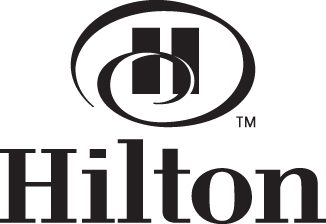 What makes a given brand stand out? Mention the name Coke, and you immediately think of the smooth, raisin-y, vanilla-forward beverage that pairs with nearly every casual meal you can think of. You can see that red-and-white label in your mind’s eye—encircling a can of ice-cold Coke—and you crave it.
What makes a given brand stand out? Mention the name Coke, and you immediately think of the smooth, raisin-y, vanilla-forward beverage that pairs with nearly every casual meal you can think of. You can see that red-and-white label in your mind’s eye—encircling a can of ice-cold Coke—and you crave it.
Coke, according to an article published by the University of Minnesota, “is the strongest brand in the world.” Studying its success can help new or growing businesses create that complete picture that a brand’s name conjures up in a hearer’s mind. It’s important to get the marketing right for a new business, but just as crucial to get the alignment of the branding right.
Branding Basics
A brand is a combination of a logo (symbol), design, picture, and a name that sets a product or business apart from its competitors. To create a strong brand, then, a business must think long and hard about those characteristics that set its products and services apart from the rest in its niche.
The business needs to think about what logos, pictures, even the very font of the lettering on their future packaging will best convey those mental pictures. That’s the process businesses refer to as “branding.”
A business must also take care not to replicate other companies’ branding—in name or in design— to not attract a lawsuit from a brand formed earlier. Although Apple—the iEverything giant—has recovered nicely, it once faced a lawsuit when it entered the music market. The Beatles’ recording studio—Apple Corp., Ltd– sued the tech firm for usurping its name and image.
Branding, it would seem, can get complicated. As best as you can, try to avoid duplication. This can take lots of research but is well worth the time spent to avoid such branding faux pas.
That being said, creativity trumps all else in branding. Even a lawsuit, it would seem. Apple—the tech one, that is—has grown into one of the finest and best-known brands in the world.
Branding Must Align with the Company, the Product, and Remain True to Itself
- Branding must align with the product’s characteristics: If the product or service is strong and the branding aligns with the product’s distinctive characteristics, the marketers’ creativity can pay off in spades.
- The product must align with the company brand in quality and pricing: If, for instance, a company who makes cheap costumes and party decorations comes up with high-end costumes for urban sophisticates’ Halloween parties, it may be better off to create a second brand for those products. If they try to sell them through their current brand image, they may never attract the attention of the customers they need to make the product sell.
- Once differentiated, a brand should take on a life of its own: Take for example Coca-Cola’s other product, the lemon-lime beverage Sprite. Not only did Coca-Cola create packaging that aligned with its characteristics (its lime-green bottle and fresh, lemony logo), but it also created a different brand—Sprite. If no one had told you that Coca-Cola manufactured Sprite, you couldn’t tell that from its packaging, advertising, or other aspects of its branding. As a result, Sprite has its own fans—many of whom cannot stand the company’s flagship product, Coke.
With these three criteria met, a brand arises above the rest. It creates an indelible image in its customers’ hearts.
Create a Logo That Tells the Brand Story in a Single Picture
Logos—the brand mark or symbol that you see on all the product’s packaging—must reflect the brand. More than that, a successful logo must tell a story.
Look at Nike. Its distinctive “swoosh” connotes movement—the movement of a leap upward—a sprint off the starting line—a ball thrown through the air. The logo itself tells the brand story in a picture.
If you’re not a graphic designer or don’t have one on staff, don’t despair. Most companies that manufacture labels and packaging do—so consult with their staff designer to come up with a logo that tells the brand story.
Don’t settle for less than what you want. If the logo the designer creates doesn’t tell the story—insist on revisions until it does. Don’t expect the designer to read your mind, though. Spell out the characteristics you want during the process. If one logo design isn’t just right, explain why. That will give the designer the insight she or he needs to create one that better reflects the brand.
Packaging, Too, Should Reflect the Brand Image
L’eggs—a low-cost pantyhose company—quickly garnered a name for itself at the beginning with its innovative packaging—a plastic Easter egg-like capsule. Since they planned to introduce the cost-saving stockings in grocery stores instead of department stores (as hosiery was usually marketed at that time), it was a genius move. The packaging reflected its availability and convenience—and the brand sold incredibly well.
Coca-Cola, on the other hand, has even trademarked its bottles’ curvy shape, lest another soft drink steal its thunder. Think about how you want to package your product, too, as you go through the branding process.
If you have a product for which the government requires labeling of weight, ingredients, or volume—make sure to make these elements fit in with your brand image. Continuing the font from the more prominent aspects of the label can help those required notations blend in seamlessly with the product’s packaging.
Consider how the packages will look en masse, if the product is to be displayed in its container within a store. Neatly stacked, brightly colored boxes of Sprite or Coke are almost an artwork in themselves as part of a display, while plain boxes with hard-to-see labels blend into the background, hardly worth a notice.
Coordinate Branding Across All Marketing
Finally, once you have established the branding strategy for the product, carry through the theme throughout all the advertising, brochures, website, social media, and traditional media outreach.
Copy, too, should reflect the brand as much as does the design and color—as should video and audio marketing. If you hire a voiceover actor, make sure that the persona matches the product.
Once the brand gains some traction with customers, use innovative ways to promote products to potential customers online who are likely to buy the product. Keep the branding consistent and the publicity constant—and people will start to take notice.




















